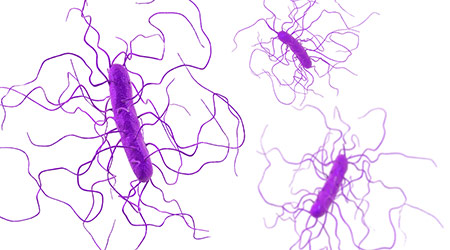A recent study sampled 16 sites within patient isolation rooms and patient bays to identify the high-risk surfaces for Clostridium difficile, according to an article on the Health Facilities Management website.
The study, published in the Infection Control & Hospital Epidemiology journal, has identified the sites in which C. diff spores persist even after terminal cleaning and hydrogen peroxide aerial decontamination.
Of the 2,529 sites sampled, floor corners turned out to be the biggest culprit with 92 of 334 samples (29 percent) coming back positive for C. diff after disinfection.
The patient room and bathroom surfaces that were tested as part of this study include: floor corners, bed rail/footboards, bed control panels, nurse call buttons, bedside tables, chair arms, trash bin lids, inner door handles, outer door handles, bathroom floors, toilet assist bars, toilet flush handles, toilet seats, sink fixture handles, bathroom door handles and ceiling air vents.

 UF Health Hospitals Rely on Green Globes to Realize Their Full Potential
UF Health Hospitals Rely on Green Globes to Realize Their Full Potential How Healthcare Facilities Can Be Truly Disaster-Resilient
How Healthcare Facilities Can Be Truly Disaster-Resilient TriasMD Breaks Ground on DISC Surgery Center for San Fernando Valley
TriasMD Breaks Ground on DISC Surgery Center for San Fernando Valley Bigfork Valley Hospital Falls Victim to Data Breach
Bigfork Valley Hospital Falls Victim to Data Breach AI-Driven Facilities: Strategic Planning and Cost Management
AI-Driven Facilities: Strategic Planning and Cost Management